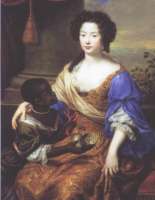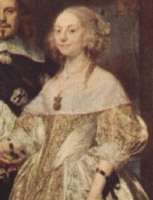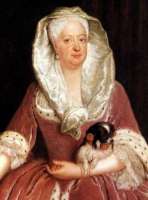| INDEX | 1300-1599 | 1600s | 1700s | 1800s | 1900s | CROSS-ERA | ETHNO | |
| MISCELLANY | CONTACT | SEARCH | |
|
|
As I've noted earlier, there are certain similarities with earlier styles.
The wide, flabby sleeves, for example, have first been seen in late 17th century (1670s/80s) informal garments. Various paintings in the National Portrait Gallery in London show either wrapping-gowns or gowns closed with jewelry in the centre front with this kind of sleeve. This variety was popular in Germany as well and stayed around into the 18th century, when it had long vanished in France and England.
 |
 |
|
|
A Countess of Hesse, early 18th |
I have no doubt that the overall shape has its ancestry in French court dress. There could also be some more distant relationship to earlier 17th century dresses one generation further back. Both exhibit the lace-trimmed oval neckline and low shoulders. The various allemande styles must have forked off the main branch somewhere between 1690 and 1710.

|

|
|
|
|

|
 |
|
|
|
And what did this dress develop into? The number of pictorial examples declines from about the 1740s onwards until, in the 1750s/60s, the deshabillé styles outweigh the Allemande even in nobility portraits. Within a court environment it was probably used right until the end, when the new Grecian style pushed in from France. It seems that the French styles were adopted with a certain time lag, at least in part due to the reasons outlined in the chapter "Why does it appear so often on German ladies...?"
Back to the Allemande cove page
Content, layout and images of this page
and any sub-page of the domains marquise.de, contouche.de, lumieres.de, manteau.de and costumebase.org are copyright (c) 1997-2022 by Alexa Bender. All rights reserved. See Copyright Page. GDPO
This work is licensed under a Creative Commons License.